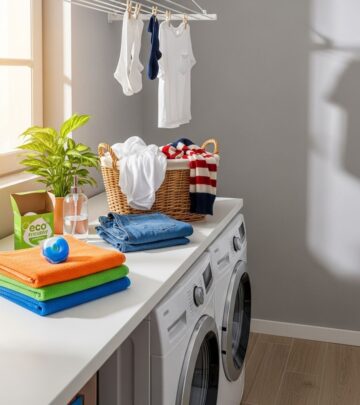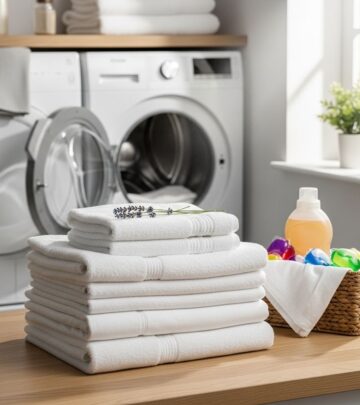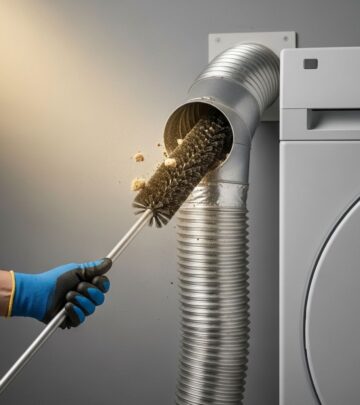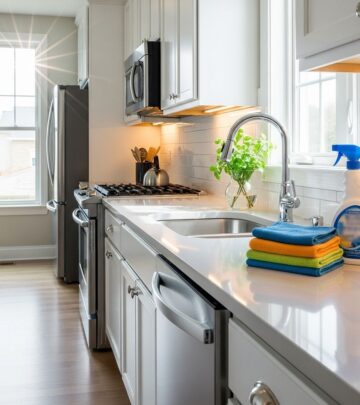How to Insulate Exterior Walls: Options, Techniques & Tips
Transform chilly, draft-prone walls into a cozy, energy-efficient haven.
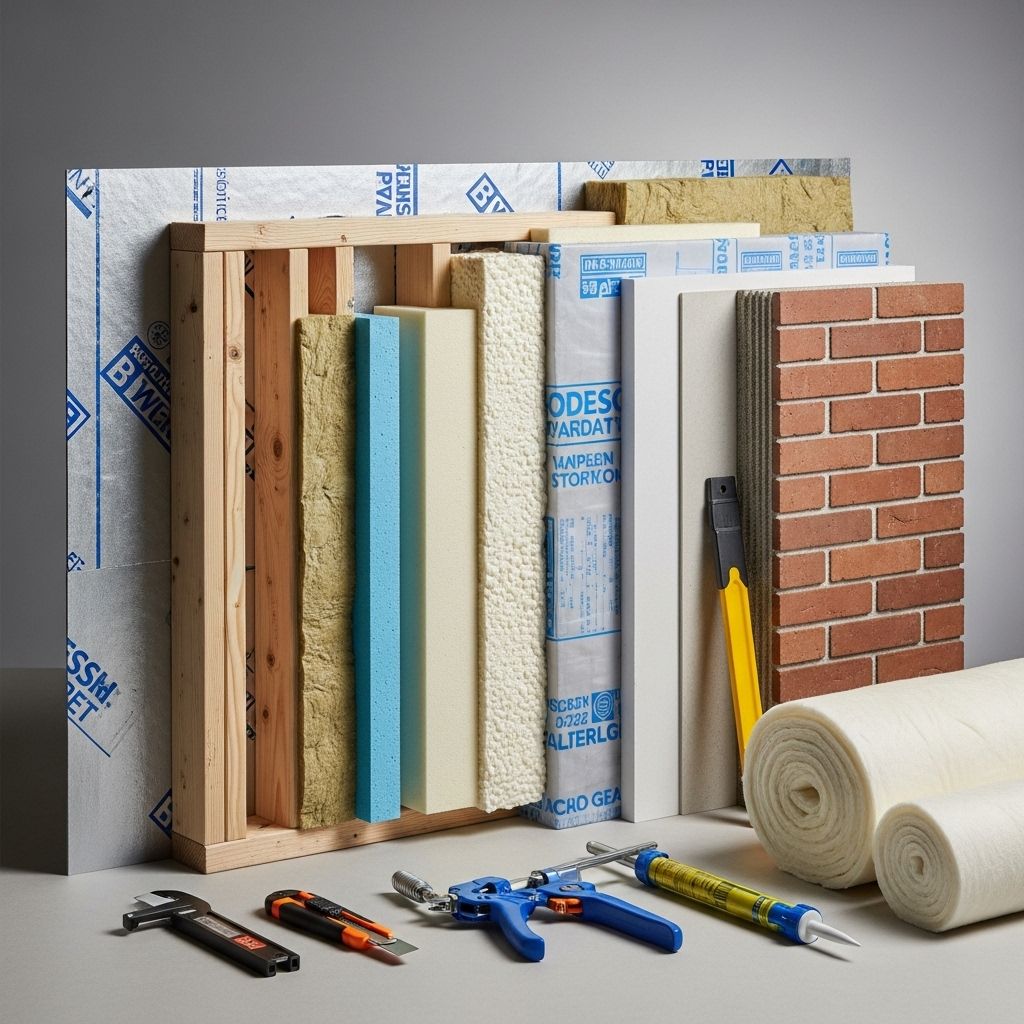
Insulating your home’s exterior walls is a crucial step toward achieving year-round comfort, improving energy efficiency, and increasing the overall value of your property. Whether you live in a cold, drafty climate or a region prone to hot summers, proper wall insulation can help regulate indoor temperatures, reduce utility bills, and protect your investment. This guide covers everything you need to know about insulating exterior walls, from choosing insulation materials and methods to installation, cost considerations, and best practices for both new and existing homes.
Why Exterior Wall Insulation Matters
Exterior wall insulation is not just about staying warm in the winter or keeping cool in the summer. It delivers a range of benefits that go beyond basic temperature control, including:
- Enhanced energy efficiency: Proper insulation helps reduce heat transfer, meaning your heating and cooling systems work less to maintain a consistent indoor temperature.
- Lower energy bills: With improved thermal performance, homeowners often see a drop in monthly heating and cooling expenses.
- Improved comfort: Insulation minimizes drafts, uneven heat, and cold spots, creating a more pleasant living environment.
- Sound dampening: Insulation also helps reduce the transmission of outdoor noise into your home.
- Increased home value: Energy-efficient homes with quality insulation are more attractive to buyers.
Where Exterior Wall Insulation is Needed
According to the U.S. Department of Energy, insulation should be installed in all exterior walls, including:
- Above-ground and below-grade exterior walls
- Walls separating living spaces from unheated garages or storage areas
- Walls between conditioned and unconditioned spaces, such as basements
If your attic is already well insulated, but your home remains uncomfortable, your exterior walls might lack sufficient insulation. Adding insulation during a siding replacement or major remodel is often the best opportunity, but retrofitting is also possible in many cases.
Tip: Always consider air sealing along with insulation to prevent drafts and maximize energy savings.
Types of Insulation for Exterior Walls
The best insulation for your exterior walls depends on your home’s construction, your climate, your budget, and whether you are building new, remodeling, or retrofitting. Below are the most common types of exterior wall insulation, each with its advantages and considerations:
| Type | R-Value (per inch) | Installation Method | Pros | Cons |
|---|---|---|---|---|
| Fiberglass Batts | ~3.2–3.8 | Between studs | Affordable, easy DIY, widely available | Gaps decrease performance, not air-sealing |
| Spray Foam (Open-Cell) | ~3.6–3.8 | Sprayed into cavities | Excellent air seal, fits irregular spaces | Professional install required, higher cost |
| Spray Foam (Closed-Cell) | ~6–7 | Sprayed into cavities | High R-value, vapor barrier, air-tight | Most expensive, may use high-GWP agents |
| Blown-In Cellulose | ~3.5 | Blown into wall cavities | Good retrofit, eco-friendly, dense-packing increases R-value | Needs professional equipment, settling possible |
| Rigid Foam Board | ~3.8–6.5 | Continuous over sheathing/walls | Reduces thermal bridging, increases total R-value, moisture resistant | Adds thickness to walls, may impact siding installation |
| Mineral Wool | ~4–4.2 | Batts or boards | Fire resistant, water repellent, good sound control | Heavier, costlier than fiberglass |
Overview of Each Type
Fiberglass Batts
A traditional favorite, fiberglass batts are pre-cut panels placed between wall studs. They are cost-effective and easy to install, especially during new construction or open-wall renovations. For maximum efficiency, they must fit snugly without gaps or compression.
Spray Foam Insulation
Spray foam works by expanding to fill cavities, cracks, and gaps, providing both insulation and air sealing. Open-cell is lighter, less expensive, and somewhat vapor-permeable, whereas closed-cell is denser, acts as a vapor barrier, and delivers a much higher R-value per inch. While it offers top performance, spray foam requires professional application.
Blown-In Cellulose
Often used in retrofits, blown-in cellulose uses recycled paper treated for fire resistance and is blown into closed wall cavities through holes drilled in the drywall or siding. It’s dense-packed to prevent settling and can achieve good thermal performance without extensive wall demolition.
Rigid Foam Board
Rigid foam boards, such as expanded polystyrene (EPS), extruded polystyrene (XPS), or polyisocyanurate, are installed as a continuous insulation layer on the exterior side of the sheathing. They reduce thermal bridging through wood studs and are especially popular during siding replacement or in new construction.
Mineral Wool (Rock Wool)
Made from volcanic rock, mineral wool batt or board products provide fire and water resistance and solid sound dampening. While more expensive than fiberglass, it offers higher R-values and superior durability in damp conditions.
Optimal R-Values for Exterior Wall Insulation
The R-value measures insulation’s resistance to heat flow—the higher the R-value, the better the insulation’s effectiveness. The Department of Energy recommends the following for most U.S. homes:
- 2×4 walls: R-13 to R-15
- 2×6 walls: R-19 to R-21
- Combined systems (e.g., batt plus foam board): Up to R-26 or more, maximizing efficiency in cold climates
Always check your local building codes and consider aiming for higher R-values in especially cold regions.
Best Practices for Installing Exterior Wall Insulation
Proper installation is just as important as selecting the right insulation material. Key best practices include:
- Continuous insulation: Install insulation in an unbroken layer across studs and framing to reduce thermal bridging.
- Moisture management: Use vapor retarders or moisture barriers when required by code or climate. Avoid trapping moisture within the wall assembly.
- Air sealing: Seal around windows, doors, outlets, and any wall penetrations to prevent air leaks.
- Proper fastening: If installing rigid foam under siding, ensure that fasteners are long enough to penetrate studs. For instance:
- James Hardie siding: Maximum 1″ insulation underneath.
- Vinyl siding: Maximum 1.5″ insulation underneath.
- For thicker insulation, use wood strapping and longer structural fasteners to safely anchor new siding.
- Ventilation: Ensure adequate ventilation in the wall system, especially when adding air-sealing layers.
- Working with professionals: Many insulation methods require experienced installers for safe, effective, and code-compliant results.
How to Install Exterior Wall Insulation
The process depends on whether your home is under construction, being remodeled, or being retrofitted. Here’s an overview for each scenario:
New Construction or Major Remodel
- Install batt or spray foam (open or closed-cell) in open wall cavities.
- Add a continuous layer of rigid foam insulation over the sheathing to minimize thermal bridges.
- Apply a weather-resistive barrier to prevent moisture ingress.
- Attach furring strips/strapping if required for siding installation.
- Install siding, using appropriate fastener length to account for insulation thickness.
Retrofitting Existing Walls
- Blown-in cellulose or injection foam can be added by drilling small holes between studs, then patching the holes afterward.
- If the siding is being replaced, consider adding a layer of foam board or mineral wool insulation under the new siding.
- In rare cases, walls may be opened from the interior for batt or spray foam installation during a gut renovation.
Cost Considerations and Energy Savings
Exterior wall insulation costs vary based on insulation type, wall size, accessibility, and local labor rates. Approximate cost guidance includes:
- Fiberglass batt: Lowest cost; DIY-friendly ($0.60–$1.20 per square foot installed)
- Blown-in cellulose: Moderate cost; professional install typically required ($1.00–$1.50 per square foot installed)
- Spray foam (open-cell): Higher initial cost; professional install only ($1.50–$3.00+ per square foot installed)
- Spray foam (closed-cell): Highest cost ($3.00–$6.00+ per square foot installed)
- Rigid foam board: Varies depending on thickness and type; add material plus labor for furring/strapping and siding adjustments
The investment in high-quality insulation often pays off through lower energy bills year after year. Homes in extreme climates or with large exterior surface areas benefit the most.
Common Challenges and Solutions
- Thermal bridging: Occurs when heat flows through studs and wood framing, reducing overall insulation value. Solution: Add continuous exterior insulation, such as rigid foam boards, to interrupt thermal paths.
- Moisture problems: Inappropriate vapor barriers or blocked wall drainage can trap moisture, leading to mold or rot. Solution: Follow building codes for your climate, and allow wall assemblies to breathe as intended.
- Siding compatibility: Certain siding materials (e.g., vinyl, fiber cement) have limits on how much insulation can be added underneath. Solution: Use appropriate fasteners and consider wood strapping if higher R-values are desired.
- Access in existing homes: Retrofitting is less invasive with blown-in or injectable insulations but may be challenging behind brick or stone.
When to Add or Upgrade Exterior Wall Insulation
- When removing or replacing siding for maintenance or curb appeal
- During a major remodel, especially if wall cavities are open
- If experiencing drafts, uncomfortably cold or hot rooms
- To address high utility bills or poor energy audit results
Some homes, especially those built before energy codes were standardized, may benefit dramatically from upgrading insulation. Modern standards emphasize greater comfort and lower ongoing costs.
Frequently Asked Questions (FAQs) About Exterior Wall Insulation
What is the best insulation for exterior walls?
For new builds or remodels, spray foam (closed-cell) or a combination of high-performance batts and rigid foam board provide the best thermal performance. For retrofits, dense-packed blown-in cellulose or injection foam are effective and cause minimal disruption.
How do I know if my walls lack insulation?
Common signs include cold or hot spots along exterior walls, high energy bills, and a general feeling of drafts. Infrared camera scans or a professional energy audit can reveal insulation gaps.
Can I install exterior wall insulation myself?
DIY-friendly options include fiberglass batts or adding rigid foam during a siding project. Blown-in or spray foam insulation usually requires specialized equipment and professional crews.
What are the code requirements for wall insulation?
Requirements vary by climate zone and locality, but most building codes call for a minimum R-13 to R-21 in above-grade exterior walls. Always check with your local building authority before starting work.
Is it worth insulating exterior walls in an older home?
Absolutely. Adding or upgrading wall insulation in older homes leads to immediate comfort improvements and long-term cost savings. Even if access is limited, blown-in options can provide a significant R-value boost.
Final Tips on Exterior Wall Insulation
- Balance insulation and air sealing to minimize heat loss and moisture issues.
- Consider siding compatibility when planning exterior upgrades.
- If unsure of your needs, always consult with a qualified insulation contractor or energy auditor.
- Combine exterior wall insulation upgrades with attic, floor, and air sealing improvements for maximum impact.
Related Resources
- Best Insulation Types for Exterior Walls
- Insulation Code Requirements and Climate Zones
- Upgrading Insulation in Older Homes
References
- https://www.greenattic.com/blogs/best-insulation-for-exterior-walls
- https://www.bluejayrenos.ca/blog/2022/7/31/best-practices-for-adding-exterior-insulation-to-your-home
- https://www.energy.gov/energysaver/where-insulate-home
- https://www.youtube.com/watch?v=E2Gmr-D1kDE
- https://www.youtube.com/watch?v=96WN8AtAvNg
- https://buildingscience.com/sites/default/files/presentation-docs/2025-03%20NESEA%20Exterior%20Wall%20Insulation-Don%E2%80%99t%20Eat%20Your%20Sweater%20Handouts.pdf
Read full bio of medha deb

